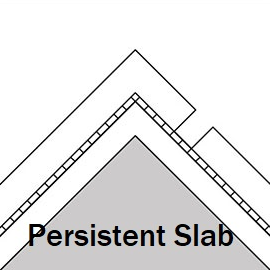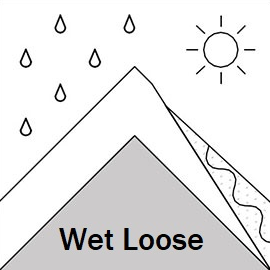Gudauri
Natural avalanches are possible, human-triggered avalanches are likely. Small avalanches in many areas, or large avalanches in specific areas, or very large avalanches in isolated areas.
While the air temps continue to rise after the recent snowfall, existing snowpack is still capable of producing large and destructive avalanches on shady aspects on higher elevations where the persistent weak layers still exist. More moisture in the snowpack due to the heat creates conditions for even bigger avalanches.
Forecast issued at: 26 March 2025 22:30
Forecast valid until: 28 March 2025 22:30
Forecaster: Petr Zherdev
High Alpine
> 2600m
3 Considerable
Dangerous avalanche conditions. Careful snowpack evaluation, cautious route-finding and conservative decision-making essential.
Alpine
2000m - 2600m
3 Considerable
Dangerous avalanche conditions. Careful snowpack evaluation, cautious route-finding and conservative decision-making essential.
Sub Alpine
< 2000m
2 Moderate
Heightened avalanche conditions on specific terrain features. Evaluate snow and terrain carefully; identify features of concern.
Avalanche Problems
Persistent Slab

Weak facet layers in the lower half of the snowpack - more often found in high alpine shady areas but also found in other places - could create a very large avalanche event if triggered. The extra weight of the wet snow makes these avalanches more likely and possibly bigger. Try to minimise your exposure to large paths, and avoid common trigger points such as areas near rocks or steep convex roll-overs. Whumphing and cracking are signs you are on unstable snow.
| Sensitivity | The specific avalanche problem type is difficult to trigger with a human rider. |
| Distribution | Specific areas, with common characteristics. Evidence for instabilities exists, but it is not obvious and finding it requires careful observations. |
| Time of Day | All day |
| Trend | No change |
| Confidence | Moderate |
Loose Wet

It's getting hot at this time of year. In areas that get a lot of sun, especially near rocks, and at lower elevations, wet avalanches are likely - they can pick up more and more snow as they travel and can become large and dangerous. Avoid these areas when the temperature increases. Partly cloudy skies can trap more heat and increase temperatures quickly - watch out for the 'greenhouse effect'!
| Sensitivity | The specific avalanche problem type is reactive to human rider triggers. Easy to trigger with ski cut. |
| Distribution | Specific areas, with common characteristics. Evidence for instabilities exists, but it is not obvious and finding it requires careful observations. |
| Time of Day | Afternoon |
| Trend | Deteriorating |
| Confidence | High |
Recent Avalanches and Snowpack
Recent Avalanches:
A widespread cycle of natural avalanches happened during the recent storm on 19-22 of March Many loose dry and storm slab avalanches, some triggered by explosives, were seen around the resort on Sunday, 23rd March (size 1 - 3).
A size 4 avalanche had released from the N face of Sadzele peak, starting in storm snow and breaking deeper layers.
Size 2 slab avalanche was released on 24th of March in lower Kobi on NE slope, at 2400 m.
Size 1.5-2 slab avalanche was released by a skier on 25 th of March during the FWQ event at 2900 on mt. Bidara NE slope.
Size 2 slab avalanche was released by a snowboarder in Kobi pro couloir of Sadzele range (NW slope, 2800 m.)
Multiple size 2 slab natural avalanches on NW slopes at around 2900 m. and a size 3-4 natural slab avalanche on N slope at 2800-2900 m. in Milioni valley
Size 2 slab avalanche on N slope of Constitution (Dragon) peak at 2900-3000 m. likely triggered from below by snowmobilers.
Warm cycle that arrived after the storm released many avalanches up to size 2 from many lower elevation slopes, and higher elevation areas where rocks absorbed solar radiation.
Snowpack: Around 100cm of snow fell at higher elevations djuring the 19-22 March snowfall, with mostly light SE winds, with a period of moderate to strong N/NW winds on March 23 morning and night. The new snow landed on icy melt-freeze crusts above a moist snowpack in many places. Faceted (weak) snow layers are still present at higher elevations, even on sunny slopes. High elevation shady slopes still hold cold snow, with the lower half of the snowpack often composed of loose facet layers between 1 and 4 fingers resistance, with old surface hoar and depth hoar in some areas. ECT test performed on 26 of March at 2720 m. on NE slope in Kobi showed a fracture propagation down at 1 m. on moist facets. As the upper layers of the snowpack get more moisture throughout the day, this creates conditions for deeper and bigger avalanches.
Weather
Air temps will continue to rise in the upcoming days up to 5C on friday afternoon but will stay below 0C during the night Partly cloudy with conditions for the "greenhouse" effect and a chance of slight precipitation on wednesday and thursday night
Disclaimer
Our avalanche forecasters are internationally qualified and experienced professionals, and data is provided by skilled observers. We encourage you to make your own observations and decisions, without relying solely on our forecast, since any forecast is a generalised 'best guess', and in certain cases it might be inaccurate. We can not be held liable for any actions you take in the backcountry that may result in injury, loss or death.